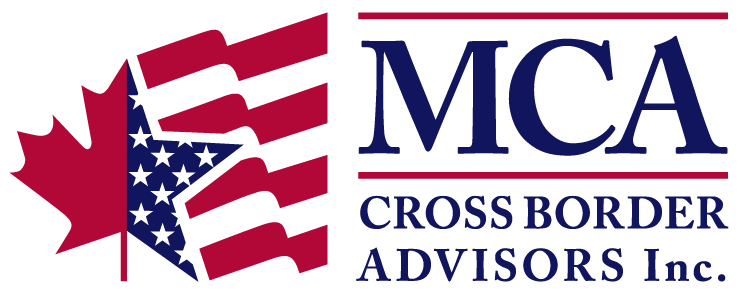Canadians returning to Canada after working in the US should be aware of the following investment planning and portfolio management issues.
Passive Foreign Investment Companies
As discussed in greater detail under the Tax Planning section, if you are considered a US person (US citizens, permanent residents/Green Card holders), you will continue to be taxed by the IRS on your worldwide income.
Within a Canadian taxable or non-registered account, Canadian mutual funds, exchange-traded funds (“ETFs”), and real estate investment trusts (“REITs”) are classified as passive foreign investment companies (“PFICs”) by the IRS, with extremely punitive tax treatment. If you have or are considering establishing a taxable or non-registered account, you should avoid holding these securities.
Canadian mutual funds, ETFs, and REIT holdings are not subject to the PFIC classification within tax-deferred/retirement/qualified accounts (such as RSPs and RIFs, which are the Canadian equivalents of IRA accounts).
We can help build, maintain, and oversee a holistic and optimized cross-border investment portfolio that remains aligned with your strategic investment objectives, risk tolerance, and time horizon while complementing other aspects of your cross-border financial plan and remaining compliant with Canadian and US tax authorities.
Regulatory Compliance
With your move back to Canada, if you currently work with US-based investment professionals, it is very likely that you will no longer be able to continue to work with them due to regulatory and compliance restrictions.
For investment professionals, the relevant regulatory bodies in Canada are the Investment Industry Regulatory Organization of Canada (“IIROC”) and the provincial securities commissions. The relevant regulatory body in the US is the Securities and Exchange Commission (“SEC”).
While there are recognition and reciprocity of investment credentials on both sides of the border, investment professionals who are licensed only in one country need to formally apply for registration with the relevant regulatory entity in the other country so that their education, training, and work experience are recognized.
Owing to the additional legal complexity, heightened business risk, and regulatory reporting workload associated with operating in another country, most firms are unwilling to embark on the registration process because of their focus on domestic or regional clients.
We have partnered with best in-class cross-border compliant investment management firms and can help build, transition, and oversee an optimized and compliant cross-border investment portfolio that remains aligned with your strategic investment objectives, risk tolerance, and time horizon, while complementing other aspects of your cross-border financial plan. We work with each client to independently determine the most suitable investment portfolio for each particular situation.
US Retirement Accounts (401Ks/403Bs/IRAs)
After working in the US, it is likely you will have assets in US retirement accounts. As discussed in greater detail under the regulatory compliance section, once you move to Canada, it is very likely that US-based investment professionals will no longer be able to continue to work with you.
For individual retirement accounts (“IRAs”), the assets can usually remain in the US. However, depending on the custodian, they can either continue to be held with the existing US-based custodian or they must be transferred to another US-based custodian who can hold assets for non-US residents. In either situation, unless the US-based investment professional is also licensed to work with Canadian residents, they will not be able to manage the portfolio and provide investment guidance and advice to you; rather, the assets will become self-directed.
For employer-sponsored plans such as 401Ks/403Bs, the situation is similar; it is likely that large investment firms handling and managing the plans cannot work with non-US residents. Assets in employer-sponsored plans can be transferred to a rollover IRA with a US-based custodian who can hold assets for non-US residents, and then the client can self-direct the investments in the rollover IRA or transfer the assets to a Canadian RSP account.
In such cases, we can help build, transition, and oversee an optimized and compliant cross-border investment portfolio that remains aligned with your strategic investment objectives, risk tolerance, and time horizon, while complementing other aspects of your cross-border financial plan. We work with each client to independently determine the most suitable investment portfolio for each particular situation.
Manager Selection and Oversight
Portfolio management is a daunting process for many individuals in general and is compounded by the additional complexities within a cross-border context. Your advisory team should be knowledgeable about investing on both sides of the border; ideally, your team will have a comprehensive understanding of the cross-border tax, financial planning, and regulatory issues that can arise.
Having an investment manager who understands your situation and needs and who works seamlessly with tax experts, lawyers, and financial planners is crucial to your financial well-being.
We favour a multi-manager approach to portfolio management by identifying and selecting top-tier managers for a particular asset class or investment mandate. Our independent oversight helps you determine which managers fit best with your investment objectives and risk tolerance. Moreover, we will coordinate total portfolio reporting, manager monitoring, optimized tax management, and comprehensive cross-border advice to help you avoid tax traps, penalties, and other issues. Where possible, we negotiate preferential pricing on investment management fees for our clients.
As an independent firm and investment fiduciaries, we can help build, transition, and oversee an optimized and compliant cross-border investment portfolio that remains aligned with your strategic investment objectives, risk tolerance, and time horizon, while complementing other aspects of your cross-border financial plan.
